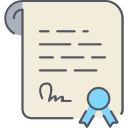Publikasi Dosen
ASUPAN GULA GARAM DAN LEMAK DI INDONESIA ANALISIS SURVEI KONSUMSI MAKANAN INDIVIDU SKMI 2014
Indonesia is facing a very complex health problems. Non-communicable diseases is increasing, while infectious diseases still quite dominant. Among other contributing factors is the imbalance of daily required nutrients intake. Overweight is closely associated with daily intake level of consumed foods, especially the calorie contributors such as sugar and fat, besides, excessive salt intake drives people to eat more. This article is intended to determine the intake of sugar, salt and fat of Indonesian population that is exceeding the WHO recommendations. The analysis used the data of Individual Food Consumption Survey or SKMI 2014 that collected data and asked all food consumed in the last 24 hours from 45,802 households and 145,360 household members in all provinces in Indonesia. Descriptive analysis of all 17 food groups was undertaken to calculate the intake level of sugar, salt, and fat of each individual, and also calculated the proportion based on the characteristics of age group, sex, place of residence, socio-economic, and by province as well. The analysis showed that 77 million people or 29.7 percent of Indonesia's population consumed sugar, salt, and fat exceeding WHO recommendations: sugar (> 50 g/day), salt (> 5 g/day), and fat (> 67 g/day). This should be anticipated due to the increasing trend of people with non-communicable diseases, such as obesity, hypertension, diabetes mellitus, and stroke which have already apparent from 2007 to 2013. It was suggested to reduce the intake of sugar, salt, and fat need of the population through advocacy, counseling, socialization at schools, food and beverage industries, restaurants, factories, and other relevant institutions.
Keywords: intake sugar-salt-fat, non-communicable diseases, Indonesian population
ABSTRAK
Ketersediaan
Informasi Detail
- Judul Seri
-
-
- No. Panggil
-
-
- Penerbit
- : .,
- Deskripsi Fisik
-
-
- Bahasa
-
Indonesia
- ISBN/ISSN
-
-
- Klasifikasi
-
NONE
- Tipe Isi
-
-
- Tipe Media
-
-
- Tipe Pembawa
-
-
- Edisi
-
2016
- Subjek
-
-
- Info Detail Spesifik
-
JURUSAN GIZI
- Pernyataan Tanggungjawab
-
-
Versi lain/terkait
Tidak tersedia versi lain
Lampiran Berkas
Komentar
Anda harus masuk sebelum memberikan komentar


 Karya Umum
Karya Umum  Filsafat
Filsafat  Agama
Agama  Ilmu-ilmu Sosial
Ilmu-ilmu Sosial  Bahasa
Bahasa  Ilmu-ilmu Murni
Ilmu-ilmu Murni  Ilmu-ilmu Terapan
Ilmu-ilmu Terapan  Kesenian, Hiburan, dan Olahraga
Kesenian, Hiburan, dan Olahraga  Kesusastraan
Kesusastraan  Geografi dan Sejarah
Geografi dan Sejarah